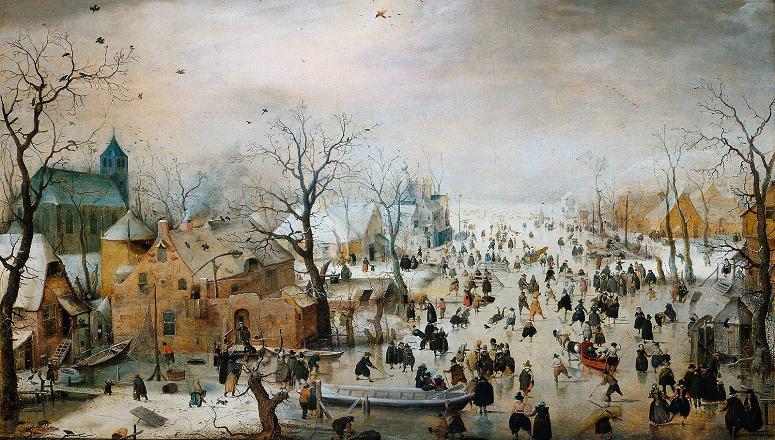Dutch Golden Age Painting. Dutch Golden Age painting is the painting of the Dutch Golden Age, a period in Dutch history roughly spanning the 17th century, during and after the later part of the Eighty Years' War for Dutch independence. The new Dutch Republic was the most prosperous nation in Europe and led European trade, science, and art. The northern Netherlandish provinces that made up the new state had traditionally been less important artistic centres than cities in Flanders in the south. The upheavals and large-scale transfers of population of the war, and the sharp break with the old monarchist and Catholic cultural traditions, meant that Dutch art had to reinvent itself. The painting of religious subjects declined sharply, but a large new market for all kinds of secular subjects grew up. Although Dutch painting of the Golden Age is included in the general European period of Baroque painting, and often shows many of its characteristics, most lacks the idealization and love of splendour typical of much Baroque work, including that of neighbouring Flanders. Most work, including that for which the period is best known, reflects the traditions of detailed realism inherited from Early Netherlandish painting. A distinctive feature of the period is the proliferation of distinct genres of paintings, with the majority of artists producing the bulk of their work within one of these. The full development of this specialization is seen from the late 1620s, and the period from then until the French invasion of 1672 is the core of Golden Age painting. Artists would spend most of their careers painting only portraits, genre scenes, landscapes, seascapes and ships, or still lifes, and often a particular sub-type within these categories. Many of these types of subject were new in Western painting, and the way the Dutch painted them in this period was decisive for their future development. A distinctive feature of the period, compared to earlier European painting, was the limited number of religious paintings. Dutch Calvinism forbade religious paintings in churches, and though biblical subjects were acceptable in private homes, relatively few were produced. The other traditional classes of history and portrait painting were present, but the period is more notable for a huge variety of other genres, sub-divided into numerous specialized categories, such as scenes of peasant life, landscapes, townscapes, landscapes with animals, maritime paintings, flower paintings and still lifes of various types. The development of many of these types of painting was decisively influenced by 17th-century Dutch artists. The widely held theory of the hierarchy of genres in painting, whereby some types were regarded as more prestigious than others, led many painters to want to produce history painting. However this was the hardest to sell, as even Rembrandt found. Many were forced to produce portraits or genre scenes, which sold much more easily. In descending order of status, the categories in the hierarchy were: history painting, including allegories and popular religious subjects. Portrait painting, including the tronie. genre painting or scenes of everyday life. landscape, including seascapes, battlescenes, cityscapes, and ruins. still life. The Dutch concentrated heavily on the lower categories, but by no means rejected the concept of the hierarchy. Most paintings were relatively small-the only common type of really large paintings were group portraits. Painting directly onto walls hardly existed; when a wall-space in a public building needed decorating, fitted framed canvas was normally used. For the extra precision possible on a hard surface, many painters continued to use wooden panels, some time after the rest of Western Europe had abandoned them; some used copper plates, usually recycling plates from printmaking. In turn, the number of surviving Golden Age paintings was reduced by them being overpainted with new works by artists throughout the 18th and 19th century-poor ones were usually cheaper than a new canvas, stretcher and frame. There was very little Dutch sculpture during the period; it is mostly found in tomb monuments and attached to public buildings, and small sculptures for houses are a noticeable gap, their place taken by silverware and ceramics. Painted delftware tiles were very cheap and common, if rarely of really high quality, but silver, especially in the auricular style, led Europe. With this exception, the best artistic efforts were concentrated on painting and printmaking. Foreigners remarked on the enormous quantities of art produced and the large fairs where many paintings were sold-it has been roughly estimated that over 1.3 million Dutch pictures were painted in the 20 years after 1640 alone.
more...














